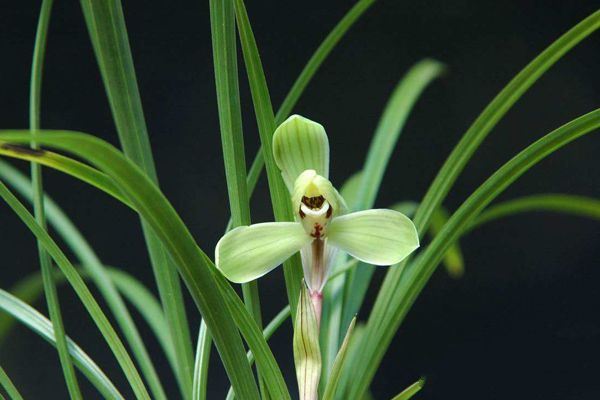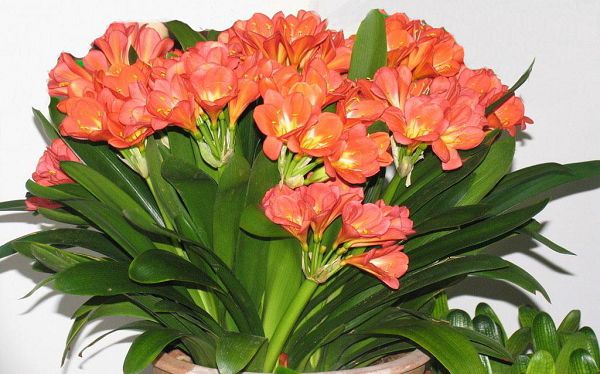Temperature regulation and maintenance measures of orchids in rainy days during orchid cultivation

Orchids, also known as Chinese orchids, terrestrial orchids and orchids, are perennial herbaceous flowers of the genus Orchidaceae. Originated in China, which is widely distributed in Yunnan, Guizhou, Sichuan and Tibet, it is not only a traditional precious flower in China, but also a famous flower in the world. Orchids are very sensitive to temperature and humidity, and how to handle them improperly can easily affect the growth of orchids. Let's talk about the temperature regulation and humidity control of orchids in cultivation.
First, adjust the temperature in orchid cultivation
When the temperature is 22 ℃ in the daytime and 16 ℃ in the evening, it is favorable for orchid germination. If it is terrestrial orchid, the temperature required for growth is relatively low, which remains unchanged during the day and 13: 0 ℃ at night. When the orchid enters the dormant period in winter, the requirement for temperature is relatively low, and it can grow normally even if the temperature is kept at 0 ℃. There is a close relationship between the growth temperature of orchid leaves and light. Even in the low temperature environment of 12 ℃, the orchid flower bud can also differentiate, which has nothing to do with the light time it receives. The main purpose of adjusting the temperature of orchid growth environment is to achieve the purpose of preventing cold, heat and changing flowering period. in the cold climate in winter, the cold resistance of leaves and buds of orchids is poor and pathological changes are easy to occur, but its maintenance temperature should not be adjusted too high, otherwise it will have a bad effect on the dormancy of orchids. The summer climate is hot, the leaves are easy to become rough, dark yellow, but also prone to diseases, so it is very important to master scientific methods of temperature regulation.
In the process of domestication and cultivation of orchids, regular daily and seasonal temperature differences need to be formed, and the temperature should be controlled to a similar degree with the temperature of the origin of orchids. Double-layer shading nets can be selected for shading in summer, which can achieve a better cooling effect. In winter, plastic greenhouse is chosen to keep warm in the nursery, which reduces the temperature difference in the greenhouse, which is beneficial to the storage of nutrients, and the orchid can also avoid freezing injury. Planting shrubs, trees and other plants around the orchid garden can also achieve a better effect of temperature regulation, which can block the sun in hot weather and reduce the emission of ground heat in winter. It should be noted that the orchid itself also has a certain adaptability and defense ability to the external environment, so it is necessary to stop enough in the planting and maintenance of orchids. If excessive protection, it is not conducive to the healthy growth of orchids.
2. rainproof and watering spray regulation in orchid planting and maintenance
Orchids can be maintained normally in light rain weather, if there are showers or continuous Rain Water weather, showers are more frequent from June to September, and the temperature is higher at this time, such as short showers and small rainfall, it is necessary to increase the amount of water in the evening. Discharge the heat from the flowerpot as soon as possible to avoid the heat damaging the orchid. In serious cases, it may lead to root rot, and if it is not properly maintained, the orchid will die. If there is a sun after the shower, it is necessary to take shading measures on the orchid in time, otherwise the rising heat on the ground will also cause damage to the orchid. During the period when Rain Water increased, orchids were also in a critical period of growth. in order to avoid excessive soil moisture in orchids, appropriate amount of plant ash should be sprinkled to keep the soil dry and ensure the healthy growth of orchid leaf buds.
Orchid watering choose Rain Water or spring water, if you use Amoy rice water or tap water, you should leave it for one night and water it along the edge of the basin to avoid water entering the bud. The specific amount of watering should be determined according to the dry and wet state of the soil and the change of air temperature, everything is suitable for the growth of orchids, orchids can be in a dry environment. If the leaves of orchids are larger, they can be watered more appropriately, and if the external environment is drier, they should be watered more. In the dry season, it is necessary to increase balcony spray in the evening to keep the ground moist and increase air humidity. Spray should be sprayed upward, so that the fog points can fall evenly, and the moisture received by orchids is uniform, which can increase the leaves of orchids. It will help it adapt to the dry climate of the outside world. If the climate is humid, less watering is usually needed in the growing period of orchids, that is, May and June, less watering is needed in March and April, and the orchids will enter a dormant period in winter. at this time, the amount of watering should be further reduced, or you can stop watering according to the situation.
Matters needing attention in orchid cultivation
The main results are as follows: (1) Orchid is mainly distributed in southeast and southwest. Much soil is born in the shade of moist valley under sparse forest and rock edge, so it likes warm, humid climate, shade and dampness, and requires shade of 70% to 90%, avoiding high temperature, dryness and strong light.
(2) the withered and yellow old leaves and disease and insect leaves should be cut off continuously in orchid cultivation to facilitate ventilation. After the flower buds are unearthed, each plant should leave a strong flower bud and the rest should be cut off so as not to consume too much nutrients and affect flowering in the coming year. After the flower fades, the flower stalk should be cut off.
(3) attention should be paid to cold protection in winter, geophytic orchids have strong cold resistance, while orchids require higher overwintering temperature, so they should move indoors or use plastic sheds as soon as possible to avoid cold, and the room temperature should be kept at 10: 15 ℃. Indoor maintenance should pay attention to ventilation. The climate is getting warmer in spring, and gradually move the orchid to the courtyard or balcony.
(4) Natural Rain Water, stream water, well water and river water are the best for family cultivated orchids. If tap water is used, it should be stored in a tank first, and then used after being exposed to the sun to remove bleach. If the flowers are watered with tap water for a long time, the cultivation substrate will be gradually alkalized. Ferrous sulfate can be applied every once in a while to increase the acidity of the soil. in addition, watering orchids with fermented Amoy rice water can also keep the soil slightly acidic.
Related
- Is the orchid suitable for indoor use? Is it good for the body?
- How to prevent the empty root of orchids?
- What to do after the crab claw orchid is withered?
- Why are the leaves of orchids always yellow? Fertilizing and watering.
- Can the root of the gentleman orchid be saved if it is rotten?
- Diagnosis and treatment of cotton-blowing beetle insects in Cymbidium
- There is a way for a gentleman's orchid to rot.
- What is the most suitable temperature and humidity for the orchid?
- How to raise a gentleman's orchid? Cultivation techniques of Cymbidium
- How to prepare the nutritive soil for the cultivation of Cymbidium



